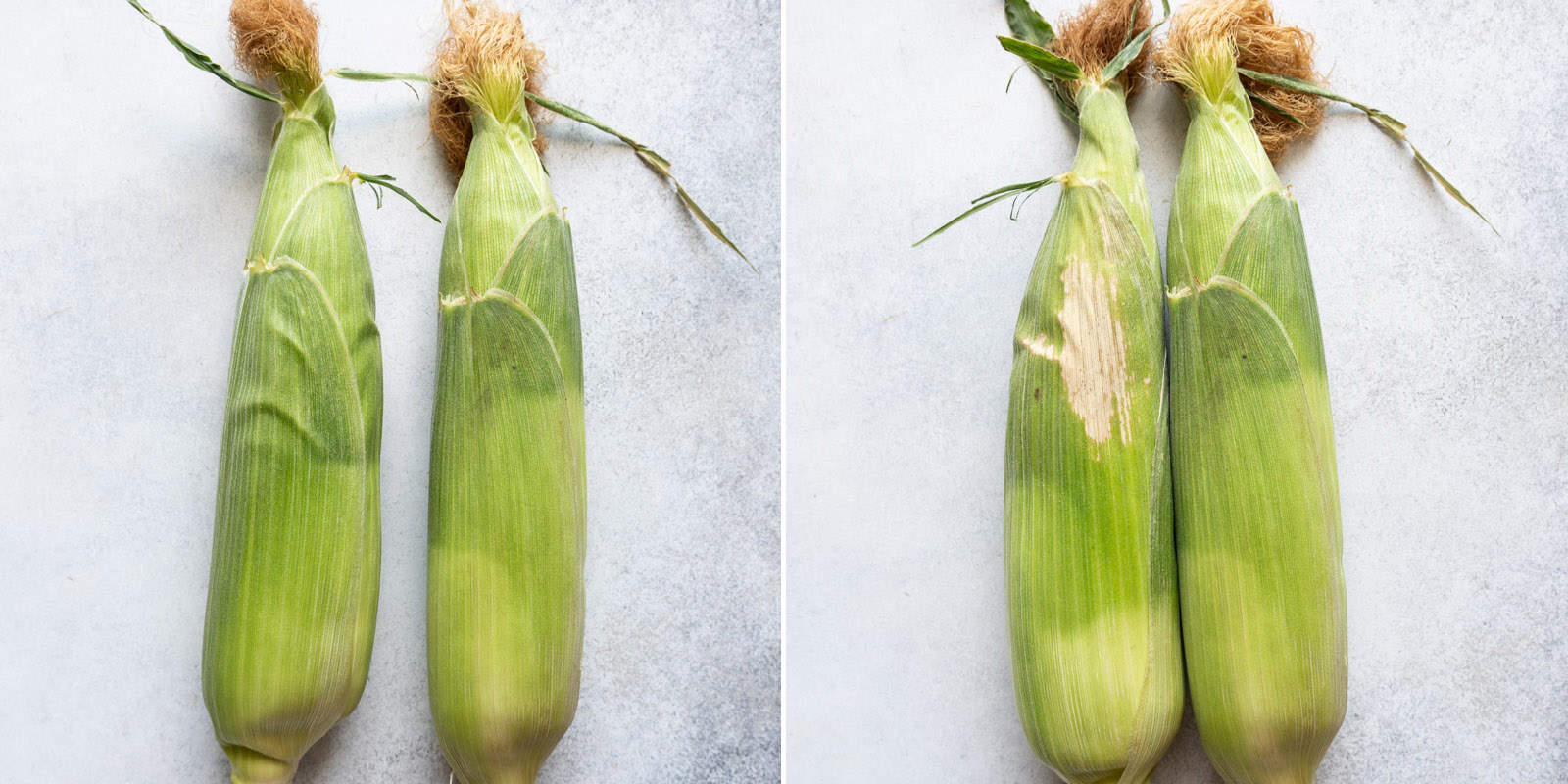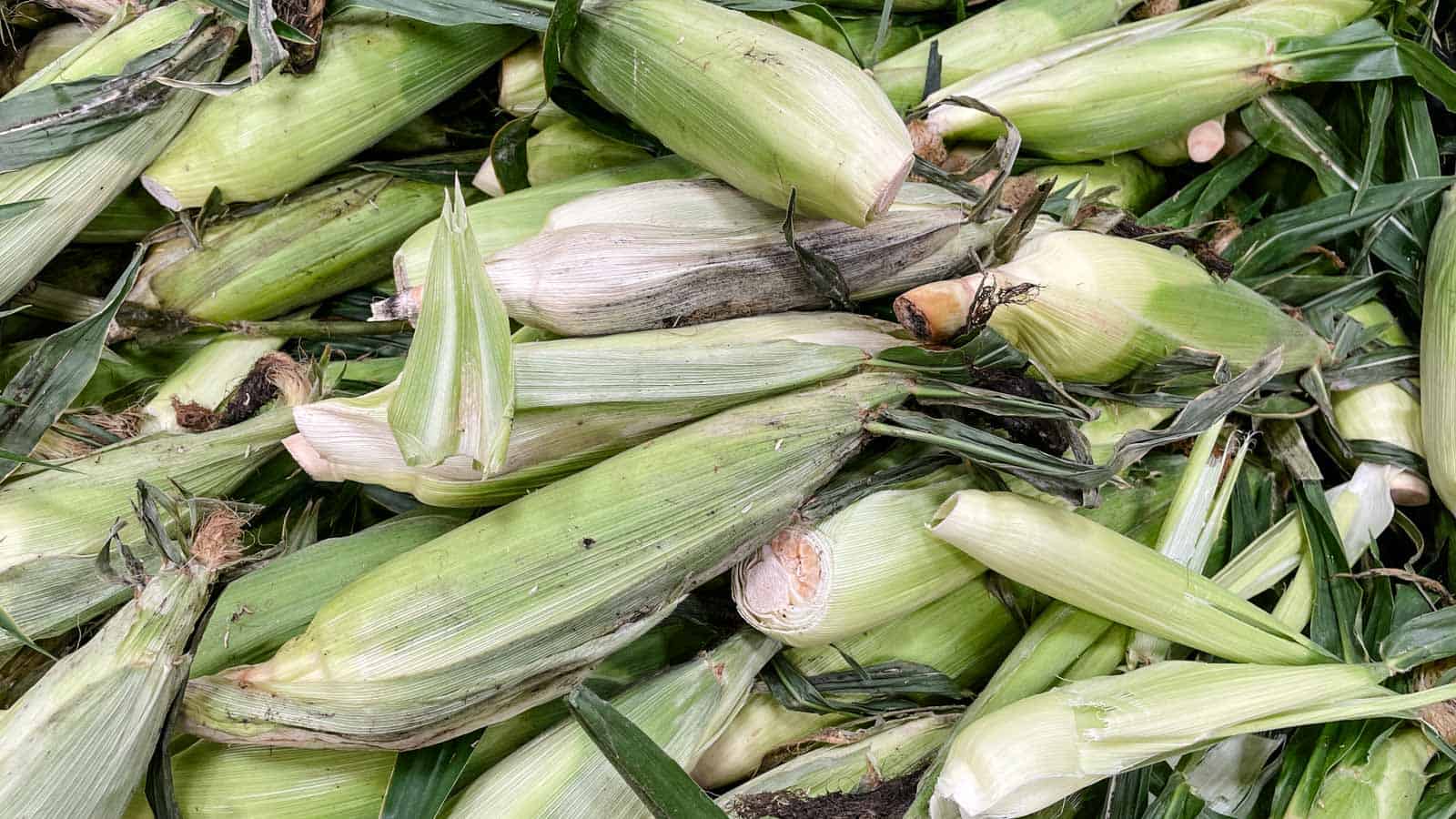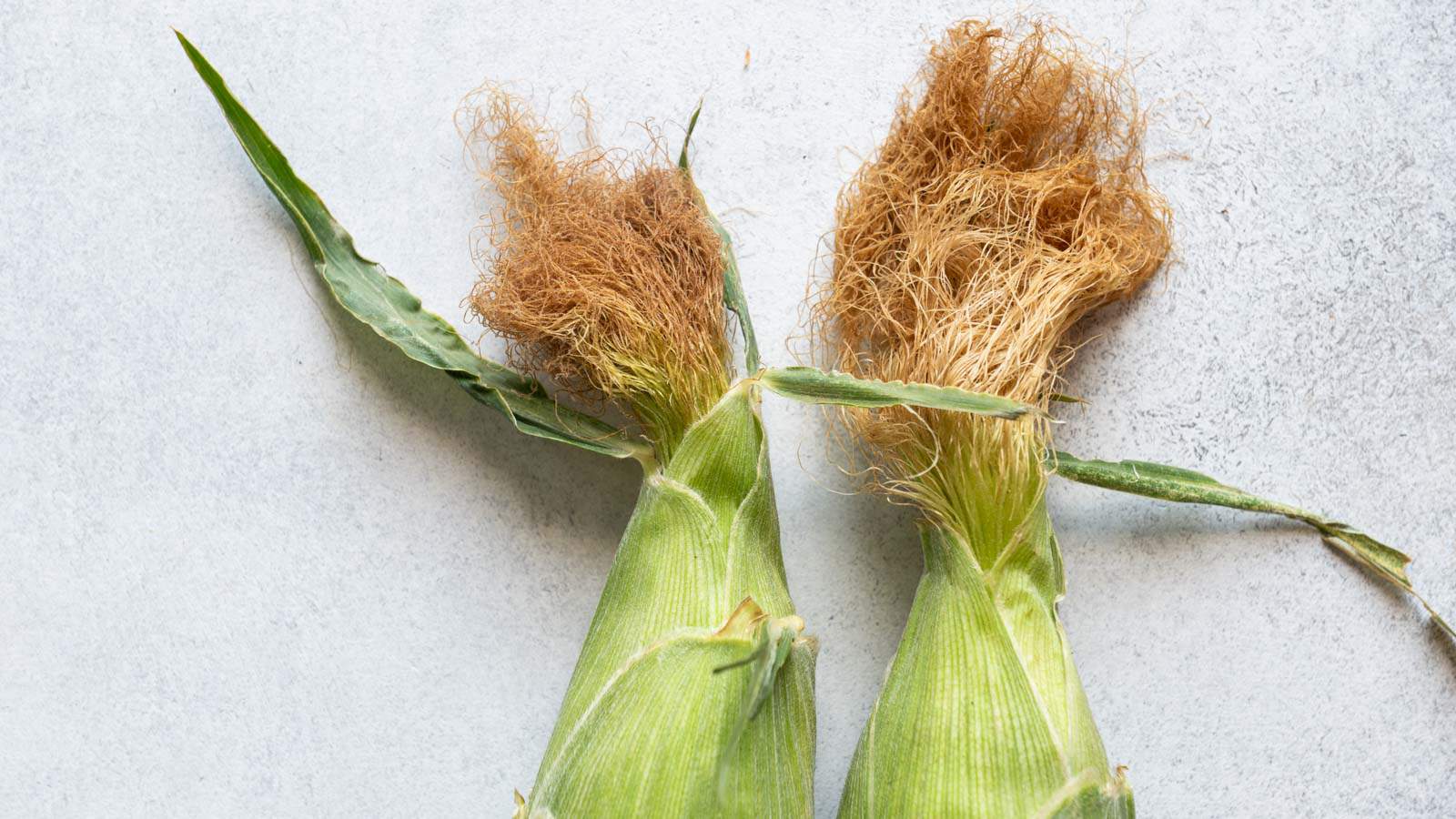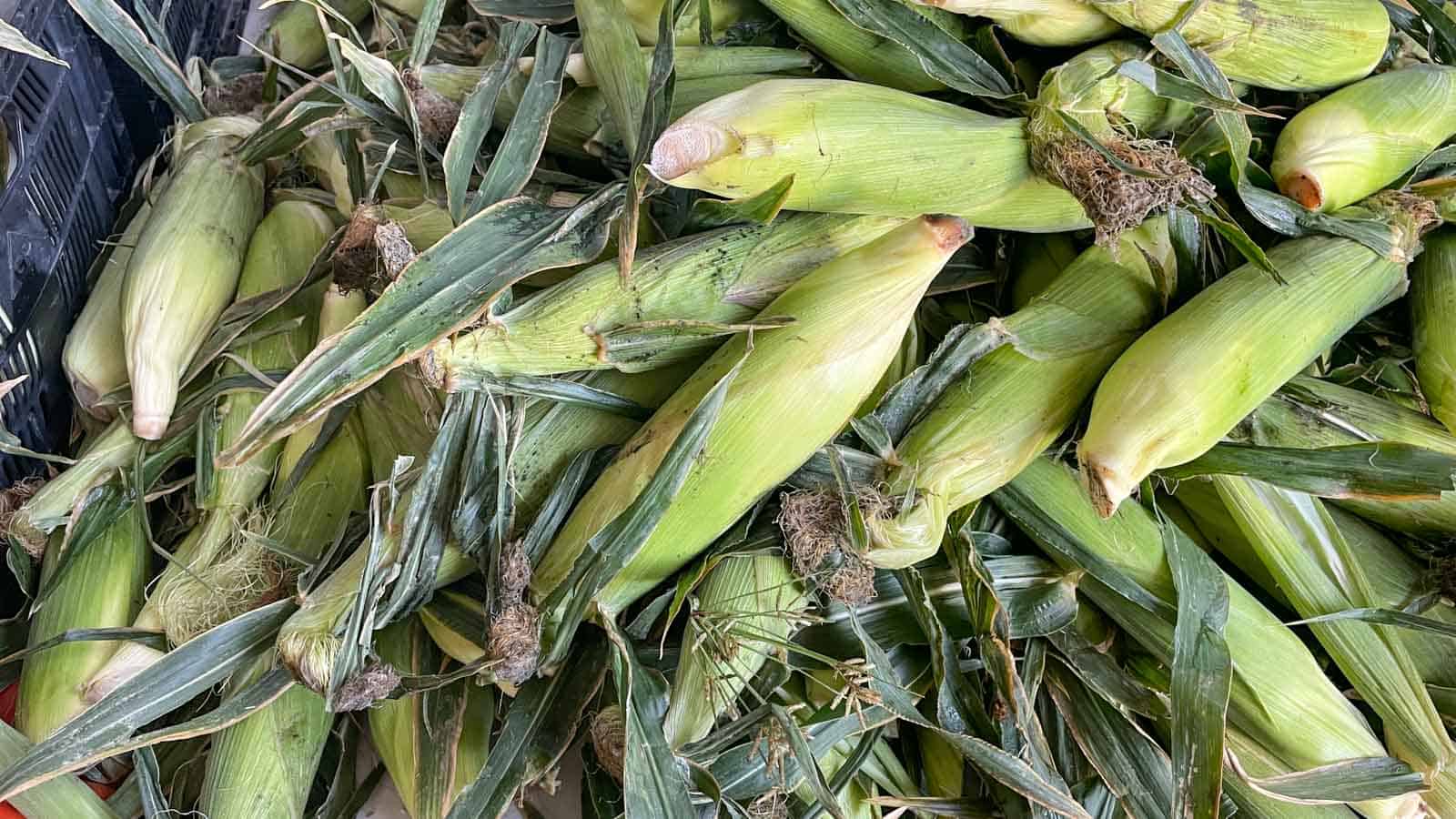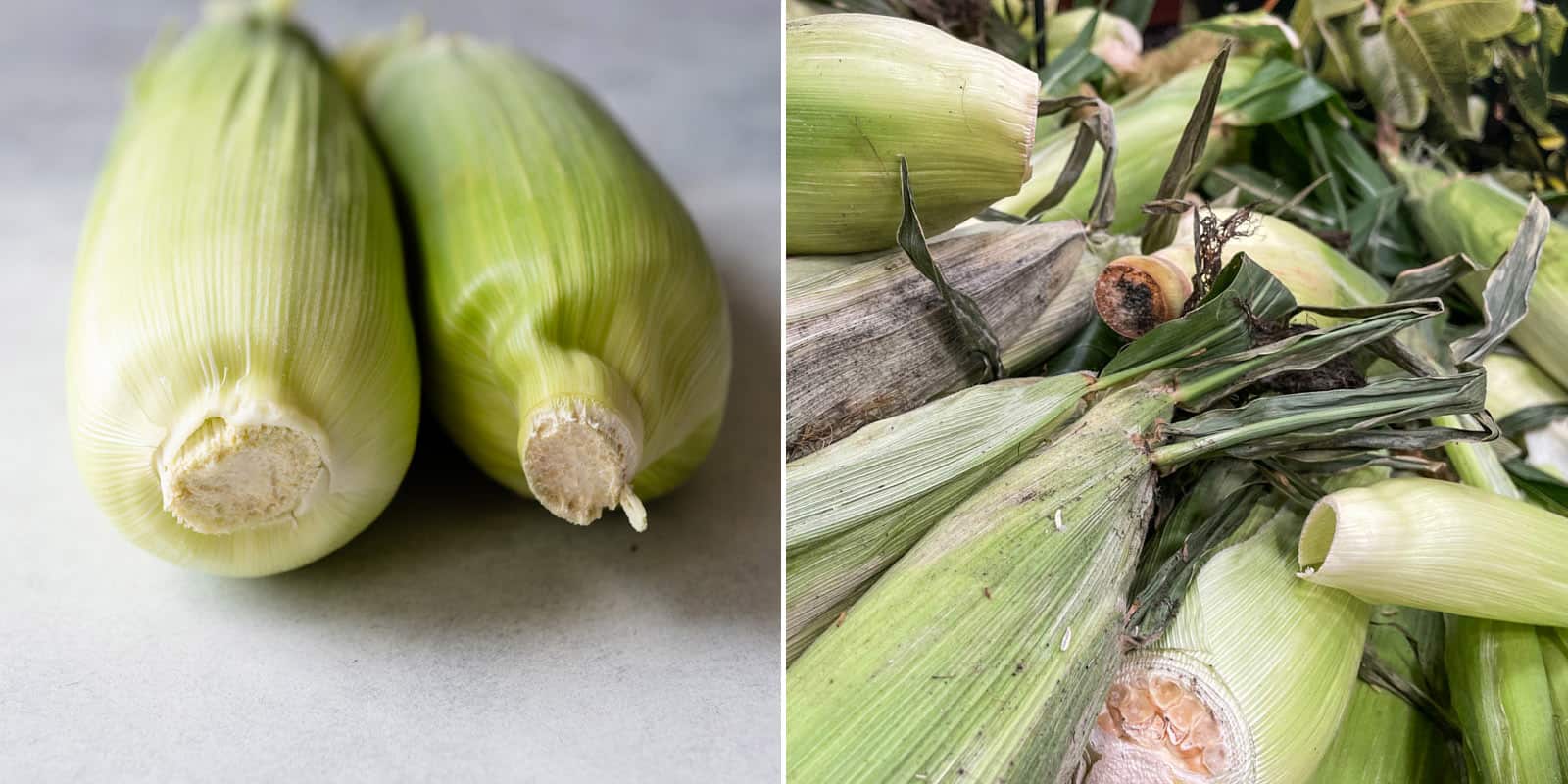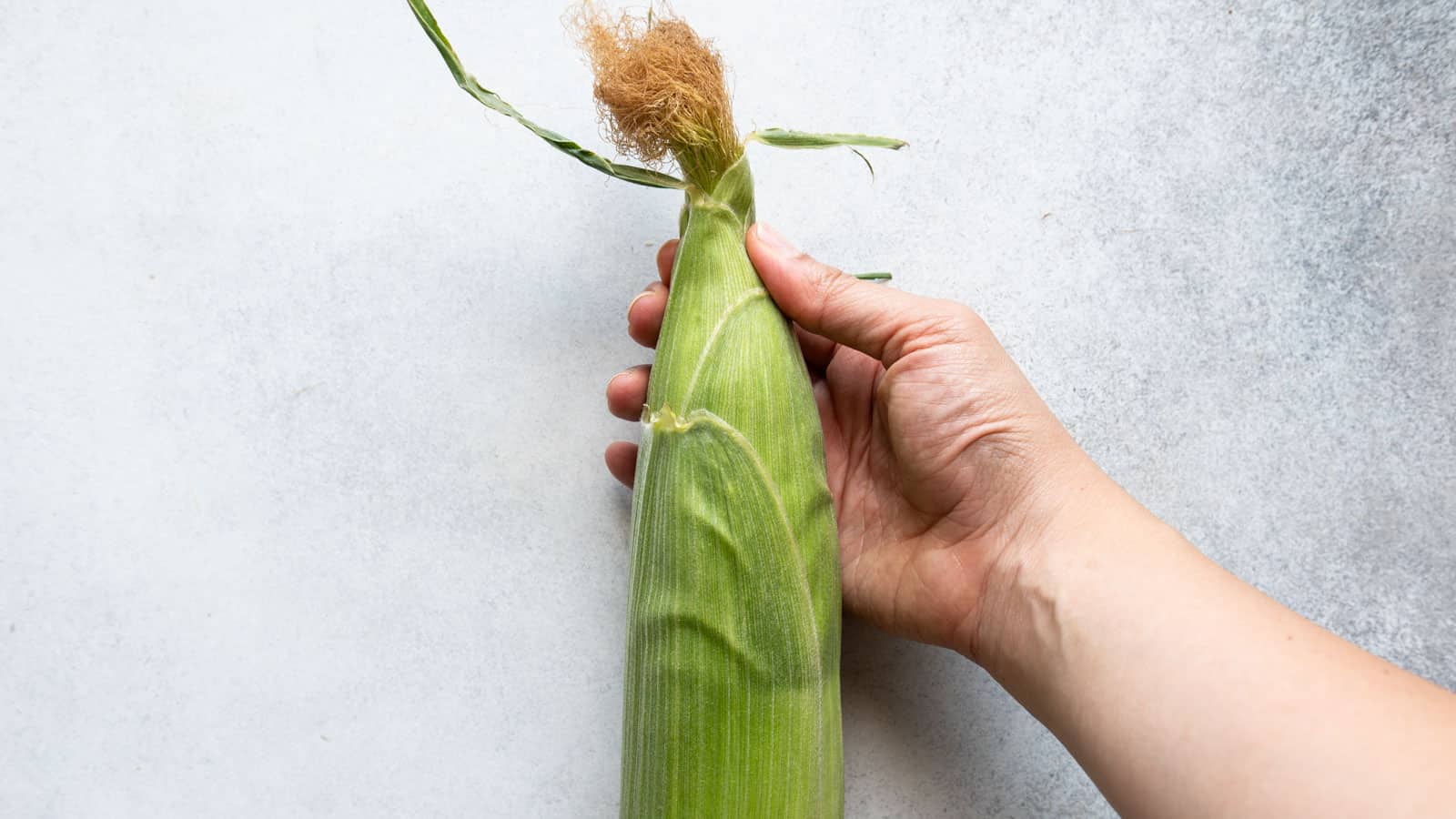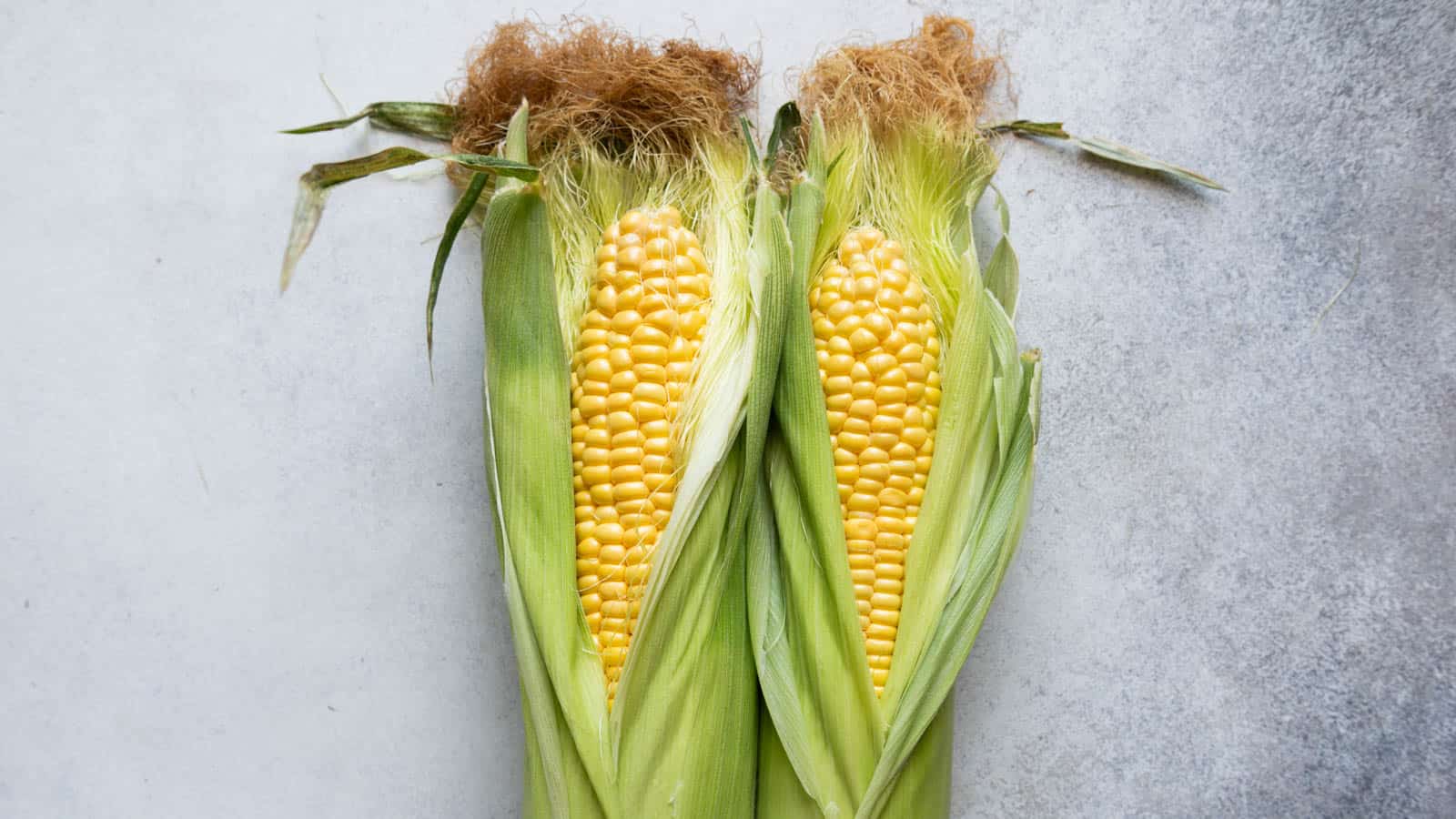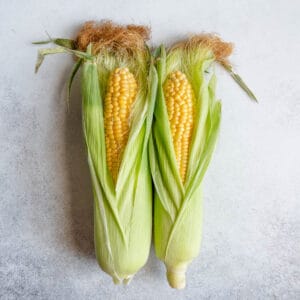Fresh corn is one of summer’s many produce offerings. Corn can be added to pretty much everything, from soup to salads. Some supermarkets sell corn on the cob already shucked and packaged in the refrigerated section, available at any time of the year. However, once you try freshly picked summer corn, it’s hard to go back. You’ll find it’s well worth the effort to pick fresh corn and remove the husks yourself. How do you pick the freshest corn without shucking the whole thing? Mama Lin shared with me her tips on how to pick corn without needing to peek under the corn silks.
HOW TO PICK CORN
HUSK COLOR
Choose husks that are vibrant green (see photo above, left). The husks should still feel moist, not dry. Occasionally, you may find corn with husks that have pale yellow patches (see photo above, right). This is the result of leaf scald or leaf scorch on corn husks. When temperatures are consistently above 90ºF, the sun is bright, and humidity levels are low, corn leaves can start to scorch and turn pale yellow. Minor leaf scald, like you see in the photo above, shouldn’t affect the quality of the corn. You can read more about leaf scald in this post from the University of Delaware. Avoid corn with husks that have significant black spots. This can mean the husks are starting to mold or the ear of corn has been infested by insects.
SILK COLOR
The silk is the hairy part at the top of the stalk. Darker colored silks can indicate the corn is mature and sweet. Pale brown or yellow silks can mean the corn is still young with smaller kernels. My mom likes to pick corn with rich brown husks because she wants the corn kernels to be relatively large. However, if you want corn with kernels that are very tender, you may want to select corn with silks that are paler brown. The photo above illustrates corn with silks that are past its prime. Notice how the color of the silks have turned back. This means the corn was picked some time ago and is no longer fresh.
CHECK THE BOTTOMS
The bottom of the ear is where the corn is cut from the stalk. Mama Lin says that the bottom of the husk should be white, which means it was cut more recently (see photo above, left). The bottom of the husk should not be brown or black (see photo above, right), an indication that the corn was cut some time ago and has oxidized. Occasionally, it can even be an indication of mold, as you see in the photograph above. Occasionally, I’ve noticed grocery stores will make fresh cuts at the bottom to make the ear of corn appear fresher. That’s why it’s important to also check the color of the husks and silks to make sure the ear of corn is actually fresh.
SQUEEZE THE TIP
The tip should look and feel firm and full. You shouldn’t feel any holes or sparse areas on the cob. Mama Lin makes the point as well that a full cob of corn is the best value! Occasionally, if the tip of the ear of corn feels loose, it can mean that an earworm has taken hold of that ear of corn. Earworms feed on corn silks right at the top. If you see an earworm, discard it and cut off the affected area on the ear of corn. The rest of the ear should be fine to eat.
HOW TO STORE CORN
The corn will taste its best right after you purchase it. Corn can lose its sweetness and turn starchy if left to sit for too long. Keep corn in the refrigerator for up to 5 to 7 days. I like trimming the silks and storing the corn in my crisper drawer. If you don’t have room in the crisper drawer, store them loosely in a plastic bag or cotton bag.
RECIPES USING CORN
Grilled Corn Salsa Savory Pancakes with Corn and Scallions (Dairy Free) Chicken Potstickers (雞肉鍋貼) (try adding corn to the potsticker filling) The Easiest Egg Fried Rice (20 Minutes) (as a veggie in fried rice)

